Australian Tropical Rainforest Plants - Online edition
Cryptocarya triplinervis var. riparia B.Hyland

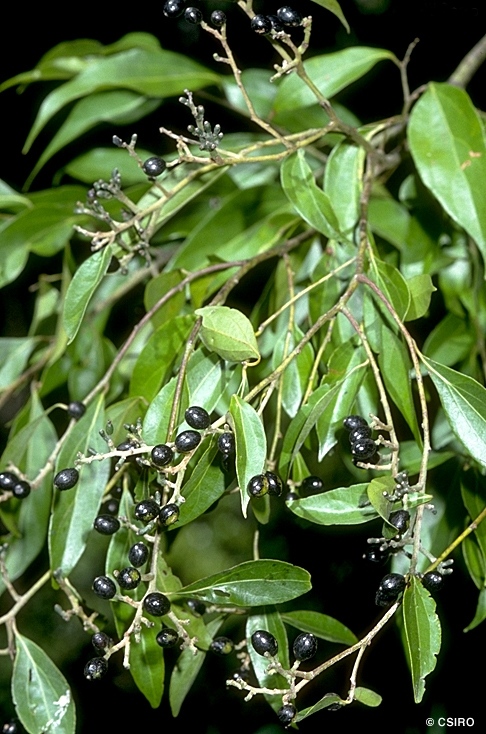
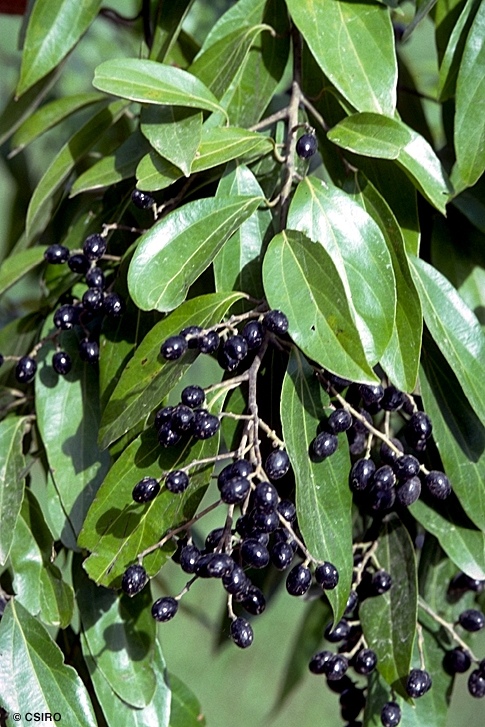

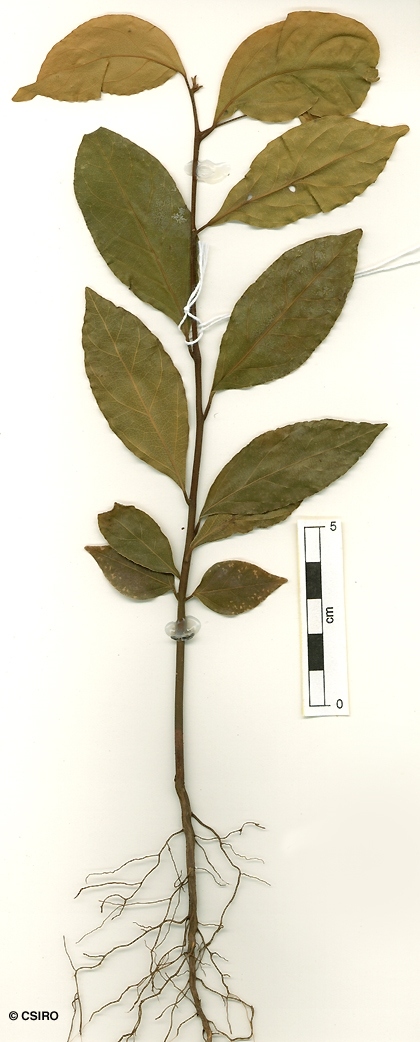
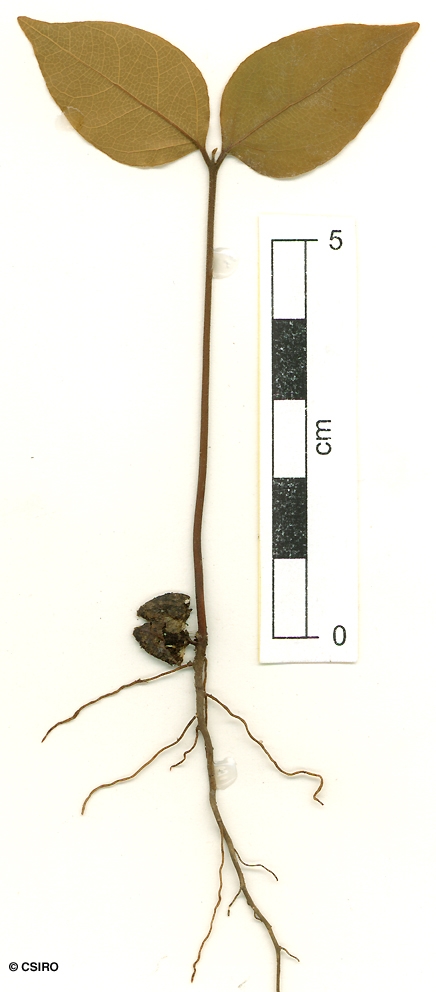
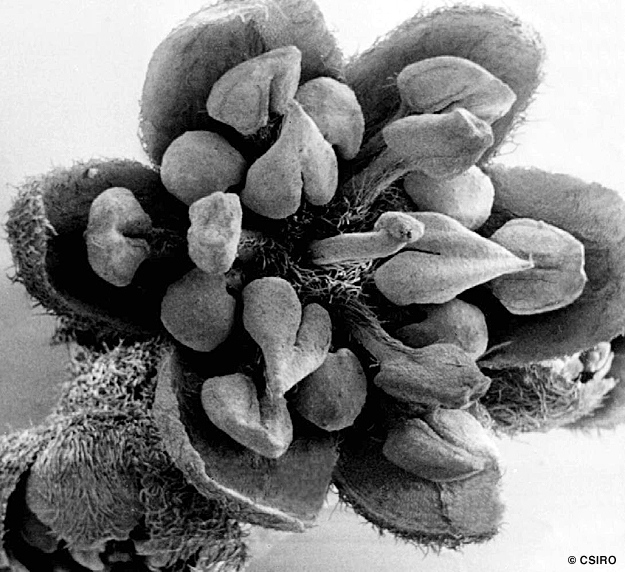
Hyland, B.P.M. (1989) Australian Systematic Botany 2: 211. Type: Typus: B. Hyland 12452: Gordon Creek, 13.xii.1982 (QRS, holotypus).
Brown Laurel; Laurel, Brown
A thin pale layer normally visible under the subrhytidome layer before the first section of the outer blaze. Reddish brown vertical stripes often visible in the blaze.
Twigs usually fluted, rarely terete, clothed in straight (occasionally tortuous), white or pale brown, appressed, rarely erect hairs which persist to some extent even on old twigs. Leaf blades about 4.5-13.5 x 1.5-5 cm, green on the underside, clothed in short, straight, white, appressed hairs when young but often almost glabrous at maturity. Midrib usually raised, sometimes flush with the upper surface. Petioles usually flat on the upper surface. Oil dots visible with a lens.
Fruits ellipsoid, rarely globular, about 8-13 x 6.5-10 mm. Cotyledons cream.
First pair of leaves ovate to lanceolate, about 25-36 x 11-20 mm, slightly glaucous on the underside. At the tenth leaf stage: the upper surface of the leaf blade often with a few scattered prostrate hairs, more prominent along the midrib; oil dots small, visible with a lens. Petiole hairy. Seed germination time 11 to 32 days.
Endemic to Queensland, occurs in CYP and NEQ. Altitudinal range from sea level to 400 m. Grows in gallery forest along creeks and rivers.
Food plant for the larval stages of the Blue Triangle Butterfly. Common & Waterhouse (1981).
This species has little or no commercial value as it seldom grows large enough to produce millable logs. Wood specific gravity 0.78. Hyland (1989).





